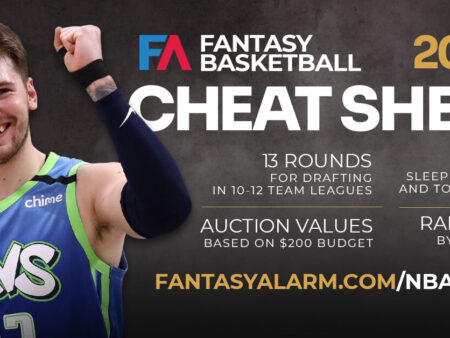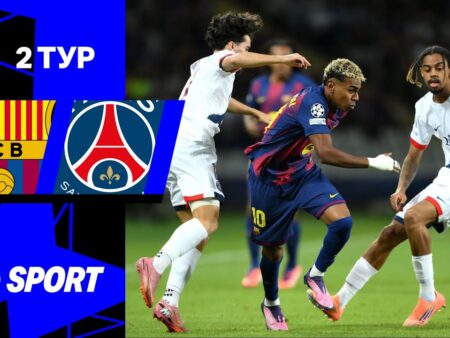
These fantasy basketball rankings are built upon comprehensive season-long projections for nearly 400 NBA players. Unlike points-based leagues, category-based fantasy focuses less on sheer volume and more on specific statistical contributions like blocks, steals, and three-pointers. Players are also penalized for poor shooting efficiency, whether from the field or the free-throw line.
The value of a player`s contribution in any given category is directly related to its scarcity. For instance, steals are far less common than assists. Consequently, each steal a player averages will have a greater impact on their category ranking compared to each assist.
To illustrate, points are the most abundant category, meaning individual points contribute the least to these rankings. Conversely, blocked shots are the least frequent, giving each block significant weight in a player`s overall category ranking.
This phenomenon is evident in both the Top 150 category rankings and these detailed category tiers. You`ll observe that shot-blockers, as a group, rank notably higher in category tiers than they would in points-based systems.
Generally speaking, defensive specialists or prolific three-point shooters will see their stock rise in category rankings, while players who primarily generate high volume in points, rebounds, and/or assists might rank relatively lower compared to points-based formats.
Below is a breakdown of players into tiers, organized by position, based on preseason projections. While this guide provides valuable insights, it`s highly recommended that you take the time to create your own tiers based on your personal valuations. This simple 20-minute exercise can significantly enhance your draft preparation and give you a competitive edge in your league.
Point Guard
| TIER 1 |
|---|
| Shai Gilgeous-Alexander |
| Luka Doncic |
| James Harden |
| Trae Young |
| Cade Cunningham |
| TIER 2 |
| Stephen Curry |
| Josh Giddey |
| Derrick White |
| Tyrese Maxey |
| LaMelo Ball |
| TIER 3 |
| Dyson Daniels |
| De`Aaron Fox |
| Jamal Murray |
| TIER 4 |
| Jordan Poole |
| Ja Morant |
| Jalen Brunson |
| TIER 5 |
| Kevin Porter Jr. |
| Tyler Herro |
| Darius Garland |
| TIER 6 |
| Anfernee Simons |
| Jalen Suggs |
| Payton Pritchard |
| CJ McCollum |
| D`Angelo Russell |
| TIER 7 |
| Malik Monk |
| Donte DiVincenzo |
| Andrew Nembhard |
| Keyonte George |
| Scoot Henderson |
| TIER 8 |
| Immanuel Quickley |
| Chris Paul |
| Isaiah Collier |
| TIER 9 |
| Scotty Pippen Jr. |
| Egor Demin |
| Jrue Holiday |
| Ty Jerome |
Thoughts on Point Guards:
- The top two tiers feature significantly more point guards than any other position. This is likely because point guards often excel in two rare categories: steals and three-pointers.
- While most top-tier point guards are franchise players, specialized contributors like Derrick White (excellent in three-pointers, steals, and even blocks for a guard) also find their way into these higher ranks.
- Reigning steals champion Dyson Daniels joins All-Stars De`Aaron Fox and Jamal Murray in Tier 3. The presence of high-caliber point guards across almost all tiers, especially in Tiers 6 and 7, suggests you can find strong options at various points in the draft, a flexibility not often seen with other positions.
Shooting Guard
| TIER 1 |
|---|
| Anthony Edwards |
| TIER 2 |
| Amen Thompson |
| Devin Booker |
| TIER 3 |
| Donovan Mitchell |
| Jaylen Brown |
| Scottie Barnes |
| Desmond Bane |
| Coby White |
| TIER 4 |
| Jalen Green |
| Trey Murphy III |
| Austin Reaves |
| TIER 5 |
| Reed Sheppard |
| Mikal Bridges |
| Zach LaVine |
| TIER 6 |
| Brandon Miller |
| Norman Powell |
| TIER 7 |
| Christian Braun |
| Jimmy Butler III |
| Shaedon Sharpe |
| RJ Barrett |
| TIER 8 |
| Buddy Hield |
| Klay Thompson |
| Keon Ellis |
| Bub Carrington |
| Devin Vassell |
| TIER 9 |
| Cam Thomas |
| Stephon Castle |
| Bennedict Mathurin |
| Kyshawn George |
| Luguentz Dort |
Thoughts on Shooting Guards:
- Anthony Edwards stands alone in Tier 1, a testament to his leap to become the league`s highest-volume three-point shooter.
- Tier 2 features Amen Thompson, whose excellent defensive categories highlight his all-around game, and Devin Booker, who provides a strong combination of offensive volume and efficiency.
- Tier 3 is unique for having more shooting guards than any other position at that level, suggesting that if you prioritize other positions early, you could snag a strong shooting guard in rounds 3 or 4.
- While Tiers 4-6 have a moderate number of players, Tiers 7-9 are again rich with shooting guard options. This implies that the best value for shooting guards can often be found in the mid-rounds (3-5) or later in the draft.
Small Forward
| TIER 1 |
|---|
| (nobody) |
| TIER 2 |
| LeBron James |
| TIER 3 |
| Jalen Williams |
| Cooper Flagg |
| TIER 4 |
| Franz Wagner |
| Josh Hart |
| Miles Bridges |
| Deni Avdija |
| TIER 5 |
| Michael Porter Jr. |
| OG Anunoby |
| Andrew Wiggins |
| DeMar DeRozan |
| TIER 6 |
| Paul George |
| Jaden McDaniels |
| Brandon Ingram |
| Kawhi Leonard |
| TIER 7 |
| Keegan Murray |
| Toumani Camara |
| Tari Eason |
| Tobias Harris |
| TIER 8 |
| Matas Buzelis |
| Ausar Thompson |
| Cam Whitmore |
| TIER 9 |
| Royce O`Neale |
| Herbert Jones |
Thoughts on Small Forwards:
- There are no small forwards in Tier 1. LeBron James drops to Tier 2 primarily due to his free-throw percentage.
- Jalen Williams and rookie Cooper Flagg make up Tier 3. Given the scarcity at small forward and Flagg`s significant hype, he may be drafted earlier than his ranking suggests.
- Tiers 4-6 contain more small forwards than any other position, offering a diverse range of specialists to fit various fantasy team builds.
- The position becomes sparse again in the later tiers, particularly Tier 9. Based on this analysis, the middle rounds of fantasy drafts are the most opportune time to find value at small forward.
Power Forward
| TIER 1 |
|---|
| Giannis Antetokounmpo |
| TIER 2 |
| Anthony Davis |
| TIER 3 |
| Chet Holmgren |
| Pascal Siakam |
| Kevin Durant |
| Evan Mobley |
| TIER 4 |
| Jalen Johnson |
| Paolo Banchero |
| Jaren Jackson Jr. |
| TIER 5 |
| Kristaps Porzingis |
| Draymond Green |
| Naz Reid |
| TIER 6 |
| Lauri Markkanen |
| Zion Williamson |
| Julius Randle |
| TIER 7 |
| John Collins |
| TIER 8 |
| Santi Aldama |
| TIER 9 |
| Cameron Johnson |
| Jerami Grant |
| P.J. Washington |
Thoughts on Power Forwards:
- Giannis Antetokounmpo is the sole occupant of Tier 1, demonstrating his dominance across categories despite his free-throw struggles.
- Anthony Davis is in Tier 2, with his injury history being the primary factor preventing him from reaching Tier 1.
- Power forward is one of only two positions (along with point guard) that consistently features at least three default players in Tiers 3-6.
- Conversely, power forward is the scarcest position from Tiers 7-9. While dual-eligible players can mitigate some of this scarcity, it strongly suggests that if you miss out on an elite power forward in the early rounds, you should prioritize drafting one in the middle rounds, as late-round value is hard to come by.
Center
| TIER 1 |
|---|
| Victor Wembanyama |
| Nikola Jokic |
| TIER 2 |
| Karl-Anthony Towns |
| Domantas Sabonis |
| TIER 3 |
| Myles Turner |
| Bam Adebayo |
| Nikola Vucevic |
| TIER 4 |
| Alperen Sengun |
| Ivica Zubac |
| Alex Sarr |
| TIER 5 |
| Walker Kessler |
| Joel Embiid |
| TIER 6 |
| Jakob Poeltl |
| Jarrett Allen |
| Jalen Duren |
| Onyeka Okongwu |
| TIER 7 |
| Donovan Clingan |
| Rudy Gobert |
| TIER 8 |
| Nic Claxton |
| Zach Edey |
| Isaiah Hartenstein |
| TIER 9 |
| Mark Williams |
| Kel`el Ware |
| Brook Lopez |
| Deandre Ayton |
Thoughts on Centers:
- Value among centers is heavily influenced by shot-blocking. This is why Victor Wembanyama outranks even the triple-double-averaging Nikola Jokic for the top spot in category rankings.
- Centers who can combine shot-blocking with three-point shooting are even more valuable, explaining Myles Turner`s presence in Tier 3 and Alex Sarr`s in Tier 4.
- Walker Kessler is notably placed in Tier 5 alongside Joel Embiid, an enigmatic former MVP with significant injury risks.
- The center position offers two players in Tiers 1 and 2, and three in Tiers 3 and 4. Tier 6 expands to four options, and Tiers 8-9 collectively feature seven players, many of whom are strong shot-blockers. This suggests that if you miss out on the truly elite centers early, you can likely find solid shot-blocking role players to fill your center spot later in the draft.











